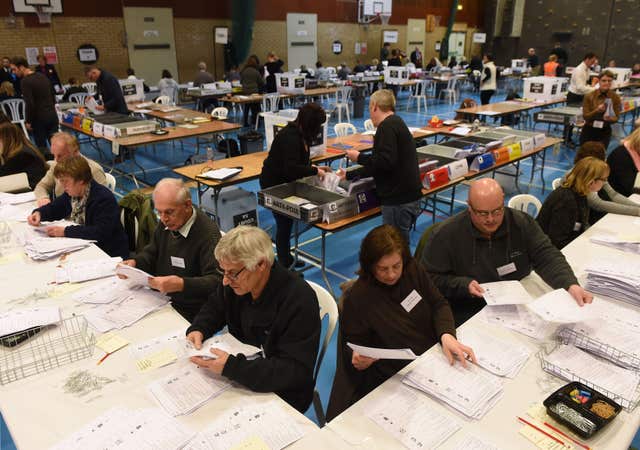Could a winter election put people off heading to the polls?
Historical evidence paints a mixed picture

A general election in mid-December has prompted talk of voters staying away from the polls, discouraged by cold weather and darker evenings.
But is there any historical evidence that voters are put off by not being able to vote in the daylight?
The last time a general election took place in December was in 1923.
Turnout was 71% – but this was an era before postal votes and equal voting rights for men and women, so is not properly comparable with today.

A more useful comparison might be to look at turnout at parliamentary by-elections that have taken place close to Christmas.
An analysis by PA of by-elections in December and January since the 1950s suggests that average turnout is often lower than the equivalent figure for the whole of the year, although the pattern is not consistent.
In the 1950s, turnout for by-elections in December and January averaged 55%, compared with 62% for the whole calendar year.
By the 1980s, the gap had widened to 46% versus 60%.
Since then the gap has narrowed, and this decade there has barely been any difference, with an average 41% turnout for December and January by-elections compared with 40% all year round.
There have been five by-elections this decade to fall in either December or January, with turnouts respectively of 48%, 29%, 40%, 53% and 37%.
The two most recent examples, both in December 2016, provide a good example of how turnout can be driven by a number of factors, not merely the time of the year.

On December 1, the by-election in Richmond Park had a turnout of 53% – but seven days later, the by-election in Sleaford & North Hykeham had a turnout of just 37%.
The former was a marginal seat where a fiercely-fought race ended with the Liberal Democrats taking the constituency from the Conservatives.
By contrast, the latter was a safe Tory seat that was held easily by the Conservatives.
The closeness of an election is just one factor that can influence turnout, along with factors such as local issues, the personalities of candidates, the popularity of postal voting and the demographics of the area.
Any combination of these might be at play when it comes to boosting or suppressing turnout on polling day.
There is no reliable evidence to suggest that an election in the middle of winter automatically leads to a lower turnout than one held at any other time of the year.
It is perhaps safest to say that if people want to vote in an election, they will find a way to do so – regardless of blizzards, heatwaves or whatever else the weather may have in store.





